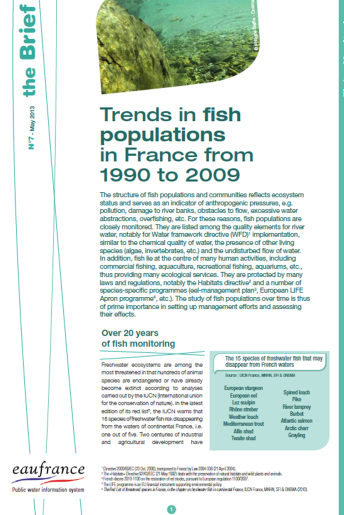Trends in fish populations in France from 1990 to 2009
Publié le 24 Juillet 2013
-The structure of fish populations and communities reflects ecosystem status and serves as an indicator of anthropogenic pressures, e.g. pollution, damage to river banks, obstacles to flow, excessive water abstractions, overfishing, etc. For these reasons, fish populations are closely monitored. They are listed among the quality elements for river water, notably for Water framework directive (WFD) implementation, similar to the chemical quality of water, the presence of other living species (algae, invertebrates, etc.) and the undisturbed flow of water. In addition, fish lie at the centre of many human activities, including commercial fishing, aquaculture, recreational fishing, aquariums, etc., thus providing many ecological services. They are protected by many laws and regulations, notably the Habitats directive2 and a number of species-specific programmes (eel-management plan3, European LIFE Apron programme4, etc.). The study of fish populations over time is thus of prime importance in setting up management efforts and assessing their effects.
